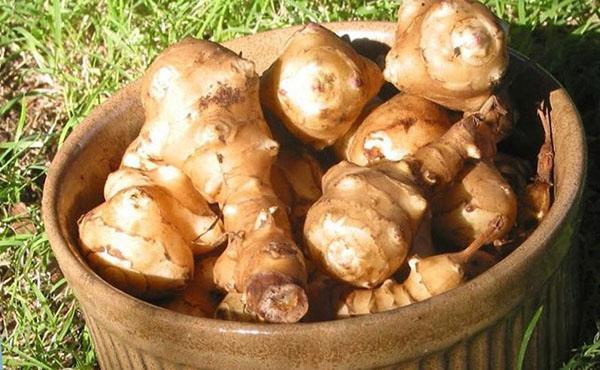Jerusalem artichoke growing technology for maximum yield
 Jerusalem artichoke is called earthen pear due to the characteristic shape of the wild plant roots. Pakistan is considered the birthplace of this culture. Jerusalem artichoke is widespread in Asia, Japan and China.
Jerusalem artichoke is called earthen pear due to the characteristic shape of the wild plant roots. Pakistan is considered the birthplace of this culture. Jerusalem artichoke is widespread in Asia, Japan and China.
In Russia, this crop is grown mainly as feed for domestic animals and birds. Jerusalem artichoke root vegetables willingly eat:
- pigs;
- geese;
- cows and goats.
Crushed Jerusalem artichoke can be fed to rabbits, quails and laying hens. The use of such feed can reduce the amount of grain and other expensive components of the feed base by half.
The unpretentiousness of Jerusalem artichoke
Jerusalem artichoke is an unpretentious plant. It can be grown anywhere on the site. An amazing feature of the culture is its adaptability to any climatic conditions. Breeders have developed varieties of earthen pears that can be grown even in Siberia.
Jerusalem artichoke grows well in loose, fertile soil. If you plant a root crop in such soil, then you can get a good harvest without much effort.
How to increase the yield of Jerusalem artichoke
In order to increase the yield of Jerusalem artichoke, it is necessary to form it. In nature, this culture grows up to 4 m in height. Jerusalem artichoke spends a large amount of nutrients on the growth of green mass during the active growing season.
The main trunk must be trimmed twice a year: in summer and in autumn, when the plant reaches a height of 2 m. 1.5 m of the trunk is left. In this case, the plant will spend nutrients on the formation of root crops.
The crop can be harvested in the fall in the first year of planting, at the same time as potatoes, or you can leave it in the ground until next spring. This will give the plant more roots that can be dug up in early spring.
Jerusalem artichoke is a close relative of sunflower. Like sunflower, this crop quickly depletes the soil. After harvesting Jerusalem artichoke, be sure to add humus or compost to the soil.
How to dig up Jerusalem artichoke
In addition to the main nest, where the root system of the plant is located, Jerusalem artichoke forms a lateral branch of root crops. In high-yielding varieties, roots grow in tiers, so a lot of tubers can be collected from one bush. In warm climates, with regular watering, the plant forms from 3 kg of tubers and from 5 kg of green mass, which cattle willingly eats.